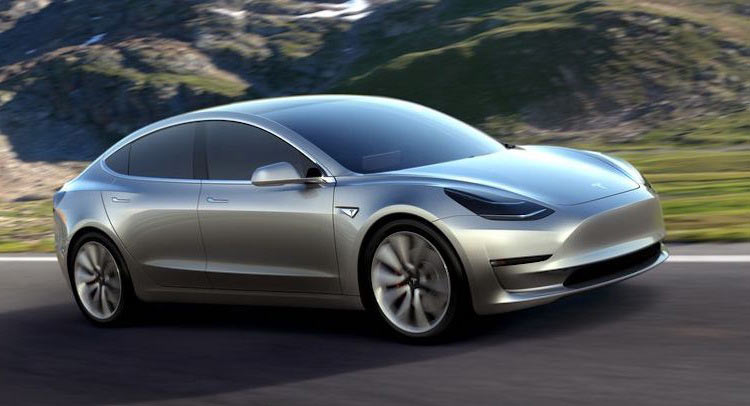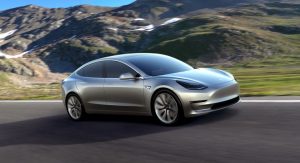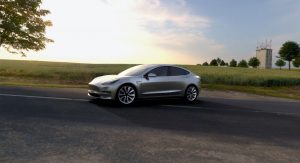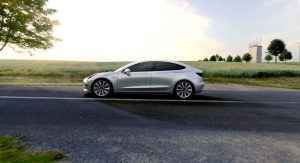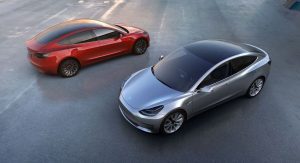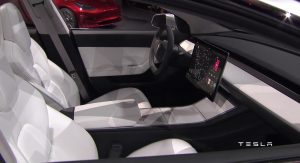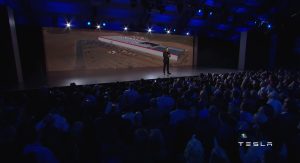Lines of people stretching about three blocks waiting to preorder a new product they haven’t even seen – and we’re not talking fancy sneakers or a new iPhone.
No sir, they were waiting patiently to put down a deposit of a thousand bucks each for what turns out to be the it car of the year: the Model 3, Tesla’s first model aimed at the mass market.
Better make that 2018, actually, for that’s when the first customers will get their hands on one. Officially it’s going to be “late 2017”, but given the company’s record of delaying new product, a couple of months won’t raise any eyebrows.
Still, more than 200,000 people (and counting) have gladly paid the deposit for the first-ever mass produced automobile from the Silicon Valley-based company. Elon Musk was most certainly elated and tweeted he’ll offer those patient customers “a token of appreciation” – probably because of the $200 million that he has far collected. It won’t cover the hole created by reportedly losing money on every Model S sold; it can however bump up the share price, and when the Model 3 starts rolling off the production line things will be much better.
Not everyone is of the same mind, though. As a matter of fact, The Daily Beast argues that the Model 3 won’t cement Tesla’s position but, instead, turn out to be its undoing. Are they raining on Musk’s parade or just calling it as they see it?
Whatever the case, it got us thinking if all the hype is justified or a facade created by the charismatic Musk and the media.
Customers vote with their wallets and it’s no surprise they drool over a sub-30k mini-Model S, after incentives are thrown into the initial 35k price. Well, this is typically correct, but actually misleading.
First of all, that’s the starting price and we’re still nearly two years away from the actual launch, so things might have changed until then. Then there’s the incentives thing: they will no longer be available once Tesla breaks 200,000 total sales. If its own estimates are valid, it will hit that mark in 2018. This will leave most of Model 3 buyers out in the cold if the mandate stands, which may or may not be the case under the new administration.
Then there’s the issue of giving existing owners priority over the rest. On the one hand it is an appreciation of their brand loyalty. On the other, this is supposed to draw new customers into the brand. The ones who couldn’t possibly afford the Model S and were drawn to the half-price Model 3. It’s those people who are supposed to increase Tesla’s production tenfold, from last year’s 50,000 units to 500,000 in 2020, not the Model S and X owners who get first dibs.
Speaking of which, Tesla is entering a much more crowded segment, one where image and exclusivity are not the only factors at play and the competitors are not only very strong, they are launching their own EVs, too. GM’s Chevrolet Bolt will also sport a 200-plus range and will hit the market a full year earlier, the second-gen Nissan Leaf is under way and the rest are not sitting idle, either.
The car is still in development, so Tesla has the time to sort out the reliability issues that plagued the Model S. Batteries were the main culprit and investigations were actually conducted by US authorities over fire risks both from the battery pack and the Supercharger stations. Plus, the limited network won’t make life easier for people accustomed to getting anything fixed by making a short trip to the dealer.
With the slowest version getting from 0 to 60 mph in 6 seconds, Musk was justified in boasting that “at Tesla, we don’t make slow cars”. Could it be they are slow in actually making them? After all, he was the one who said in 2006 that the future laid in sustainable transportation.
The cars revealed last night in LA were “working prototypes” and the Model 3 development is ongoing. The jury is out and, by the looks of it, will be for quite some time.



